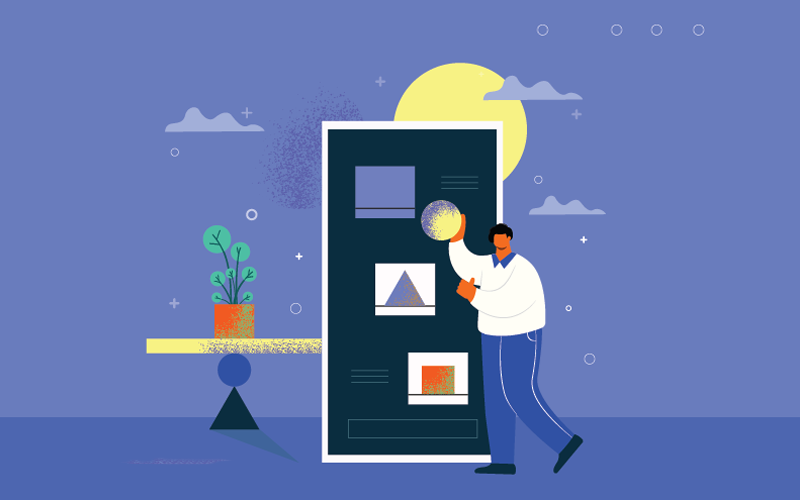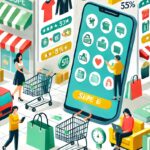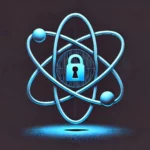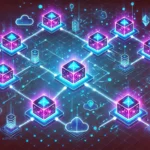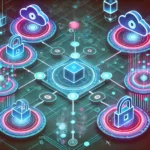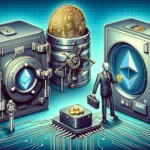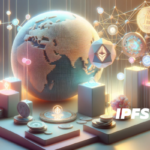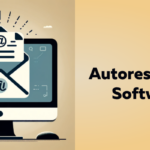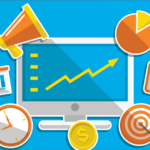Websites are constantly changing, and there are always new trends that pop up. Here’s what we think the next 5 trends will be in web design for the year 2023. Web designers have come across a ton of new web design trends lately, and some are still in the process of being implemented. Looking ahead, it’s hard to know what types of trends will be popular. But here’s a 5-point preview.
A trend is more than just a popular style or a trend that’s popular right now. Design trends can be nostalgic and give designers inspiration to try something new. By looking at the past, they can create something new (but rooted in their own aesthetic point of view). Web3 and interactive technologies are always creating trends.
Designers can use trends to find inspiration and make sites & projects for their clients that stay current. For 2023, the standout theme is the shift towards more immersive experiences. There’s a lot of hype, but we need to know what the near future holds. This includes the whole merger between VR and AR as well as advances in building technology.
1. Nostalgia and the Y2K aesthetic
This year, we expect to see the Y2K aesthetic grow in popularity. The last few years have seen a resurgence of early 2000s style across fashion, music, interior design, and art. Naturally, that trend’s bleeding through into graphic design too.
This isn’t something that’s fully agreed upon. I’ve seen people say a 30-year cycle and others argue for 50 years. Either way, it seems to me that the explosion of social media has made it easier than ever to adopt new trends”. People are still clinging to the ’90s and ’00s trends which means we’ve got six more years until people get bored of the old stuff and move on to 2020 aesthetics.
Some designers are taking this trend in a retrofuturist direction, using aesthetics from the Y2K era. They might incorporate Vaporwave, Glitch icons or Cyber core visuals. Or they may just use pixelated fonts/images and old typefaces (like Arial) to create a retro style.
Design tip: trying to modernize just one element of your design can make it feel clean and fresh. For a design that recalls that classic feel, consider playing up the font, colours or detail.
There are some great resources out there for finding early 2000’s internet inspiration. The Internet Archive’s Wayback Machine lets you see actual website designs from the era or I like tracking how a site has evolved over the decades. If you prefer to see a selection of designs curated by experts, the Web Design Museum has documented some exemplary web designs from the late 90s and early 2000s.
Y2K fonts and text-based designs
With Y2K trending we expect to see more designers use the fonts and layouts of the past. Many of these designs are less minimal and often use dense volumetric text or mixed-up fonts to achieve an eye-catching design. Web design in the 1990s was often limited to “simple” fonts and those that were sans serif or monospaced. The low-res images at the time meant that text had to be readable quickly. A classic website from the Y2K era would have looked something like FanFiction dot net in 2001. Lots of white spaces, tiny images, small font, and just a 10-year-old computer programmer at the helm.
Designers and artists take inspiration from historical eras to create unique designs. Designers Adam Ho mix fonts to mould unique layouts that stand out from the ordinary. Adam uses a bold sans-serif font to highlight the words he wants people to notice. He balances that with a mix of light serif fonts for visual interest, and his design even has elements of cyber aesthetics.
Unique cursors
If you went online during the 90s-early 2000s, you may remember playing around with cursor effects like turning your cursor into a cat, a smiley face or an alien head. You may have enjoyed the countless possibilities of using the clock, fairy dust or ghosts as your cursor! Y2K was a really fun time. A lot of people genuinely use this time to reconsider the trajectory of their lives. Cursors have generated a lot of buzz in the last few years, with more people than ever making their own. This is because they use an original image as an icon or include animated effects to make them interactive for anyone using a mouse. They don’t require you to install a cursor pack though and still work great!
I can’t forget to mention that Mackenzie Child’s work, including interactive cursors on a Mac and his cloneable retro site template, is very admirable. In Mackenzie’s design, the arrow and link-pointer fingers are oversize with a cartoonish face that matches the other elements. Mackenzie continues with a “Y2K look” in their new site – heavy grayscale color scheme, boxed layout & sans-serif font.
Pixelation
Pixel images which were used in the past as a technicality are now becoming more and more popular with designers who are now noticing them as visual interest.
They created a pixelated logo and used other pixelated elements throughout their site. Look at the pixelated pictures they use in videos. The site design is simple and has a very retro vibe. The pixelated shapes keep things feeling cohesive and reinforce the idea that you’re in this world together.”
2. Custom typefaces
Over the past few years, text-based designs have become very popular. We think custom fonts and hand-created lettering will be the next big thing in 2023.
More and more designers are creating their own typefaces or hand lettering. This is partly due to the fact that it’s easier to make your mark this way, as well as the trend of putting lettering centre-stage.
And there’s no one-size-fits-all design for each tattoo just yet. This trend is so fluid and personal, we’re seeing designers incorporating their own interests into their work – anything from topics in graphic novels to creating tattoos out of real-life material like human skin.
You can take two different paths to this trend: if you’re a beginner, you can use resources to learn the styles and techniques over time. If you have more experience, then you should invest in some tools that will make it easier. Font generator tools should have a wide variety of fonts and different ways to build them. Structs and BitFontMaker give you a lot of options.
All you need is some know-how with digital drawing tools to DIY some lettered graphics. You can also use apps to digitize artwork you’ve drawn with pencils, pens, paint, or any other materials. You’ll need some design know-how, but you can turn your images into fonts that work with any font program.
Now, let’s take a closer look at a few designs we’ve seen lately
Stencilled and Screen-printed font designs from Tre Seals
When you need to go with a text-based design for your website, a bold graphic approach is usually best. This allows the site’s content to be easily readable, similar to how signs, posters, and banners are designed.
The lettering used on these signs & posters is usually hand-painted, screen-printed, or stencilled. It needs to be large enough & clear so that everyone can read it, but also look good and memorable
To make each letter more readable, sometimes you need to use thicker typefaces and have hard edges. The result is a flashy & fun design that would work well on a website.
The bright colours and unique style of illustrator Leandro Assis are something to take note of.
There’s been a resurgence in abstract illustrations lately, and illustrative design styles like Corporate Memphis have also been trending. A lot of designers are embracing illustrated hand-drawn lettering as a way to complement the more realistic text and imagery.
One of our favorite examples is Leandro Assis, a Brazilian lettering artist who has a cartoonish style and creates fun fonts. His work has been used by brands like Nike, Amazon Music and more to create great-looking campaigns.
Leandro uses bold color blocks, smooth curves, and black outlines. His lettering is usually easy to spot because of this. He’s even been able to incorporate animation into his lettering so it stands out even more!
Tryst with Reality by Aurelie Maron
It’s totally awesome how chalk drawings, metal and neon signs, textile effects like embroidered letters are all in vogue lately. This style is called trompe l’oeil which means “fools the eye” in French. It looks like 3D and has real textures & materials, it almost pops off the screen.
We love Aurelie Maron’s work with trompe l’oeil lettering. She’s also created a series of tutorials and classes that teach you how to do it. It can be difficult, but she makes it easy to understand!
3. Shareable frameworks
As creators are sharing resources and techniques with each other to grow their reputation on the web, we should expect a lot of shareable frameworks over the next few years.
Flowbase has found that giving away its services is a powerful asset for its business. Finsweet Webflow agency built up its reputation by being open about what they do and sharing knowledge.
A lot of people who create online web pages want to build a better experience for people browsing the web. Alexa Heinrich recently gave an interview with Webflow, where she talked about her Accessible Social Guidebook. She cares about making social media a place everyone can fully enjoy and use it in their own ways. Rather than just telling people to build accessibility, she chose to publish a practical guide to help them do it.
Designers are now sharing their website designs in a cloneable format on Made in Webflow. We’ve also seen people like Trist Adlington share templates for Note, and create beautifully structured style systems like Finsweet’s Client-First.
4. Illustrations with dimensionality
With augmented and virtual reality becoming more prevalent, it’s not surprising that illustrations that mimic these environments are coming into fashion. 3D illustrations and Claymorphism seem to be driving this trend.
3D illustration has been trending in the past, but it was mostly the style for illustrations. Other sites are gradually starting to add dimensionality by including animations, effects and full-page 3D images.
3D illustrations
In 2023, 3D illustrations will once again come in fashion & become a popular form of web design. With flat illustrations dominating past trends, this will serve as a way to stand out from the crowd.
Something that has been gaining popularity recently is building a full 3D experience across your site. Redis Agency has done this with their site, putting the animation at the forefront of their design rather than simply using it as a decorative header or illustration. The content is made more engaging with the addition of a parallax scrolling effect.
Metaverse
Think you’ve heard of the metaverse before? It’s a digital space that can be interactive and a whole new world. There are lots of people who are thinking and debating it, which just means it’s even more on everyone’s minds. Web users are used to using the internet and Virtual Reality, which will result in the digital world we know today (the metaverse) becoming an increasingly important part of the way we design websites in a few years.
A metaverse is a form of virtual reality. Visitors can see everything come together to create the immersive world we know today. Instead of having a single 3D illustration or element on a webpage, some sites are trying to build an experience like what you would find in the metaverse.
Designing websites often include a lot of detailed work. This includes things like backgrounds, illustrations, text, cursors, and certain interactions that make the site feel more dynamic and responsive. In the future, we’re going to be able to live in these massive virtual realities called metaverses. They might seem unbelievable now but some people are already making that jump. Sites today are exploring the immersive properties of 3D illustrations and elements by building cross-platform programs for users to explore.
Totem is a new OS that’s all about your Web 3.0 identity. It’s great for the “eco future.”
Totem, a company that specializes in immersive websites, uses animated effects to give Totem sites an immersive feel. Designer Off brand has layered and unified the various elements on the site to maintain cohesion.
On the flip side, Music Mania’s website is edited with helpful 3D animations in the background. It is separate from the other images, text and illustrations on their site but everything still flows together nicely.
Claymorphism
Claymation creates a different vibe on the web – viewers can see and interact with the illustrations as if they were touching them. They’re made to look tactile and realistic just like in movies like Wallace & Gromit which many people will have come across while growing up.
In 2023, we expect to see more claymation-inspired designs, which combine 3D effects with cartoonish figures. These have been trending in web design recently and will continue to do so in the future.
LS Graphics put together a monthly collection of 3D models and graphics, created with Claymorphism-inspired figures and objects.
Claymorphism is a great approach for making 3D models of humans that are playful, but don’t fall into the “uncanny valley” area. One of my favorite libraries is Guuulp!’s animation library. In the claymation-style humans section there’s a great variety, and I enjoy viewing their animation that uses Claymorphic characters on Webflow’s grant site.
5. “Just for fun” interactions
This year we expect to see more “fun” interactions where they don’t serve any real purpose, but just give the site enthusiasts the chance to play around.
You can now make a website interactive — just like it was an app. This means that there are lots of ways to explore the content as well as find hidden gems.
For fun animations, it doesn’t have to be part of your main navigation to be effective. Interactive animations like Ball Pit & the Love Button are not only super fun, but also engaging. You don’t have to worry about their presence impacting your site’s performance.
A fun animation can also make a website more memorable by adding meaning and creativity. The Lazarev Agency used their own mascot Batumba for their site and created his interactive animation as a team-building exercise. The character is a great way of demonstrating the agency’s coding skills in an entertaining way and it gives potential clients something memorable to come back to.
2023 is the year of user engagement
The internet is interactive by nature. Designers have been making interactive content for a long time now, and creative games are probably some of the most popular examples. They create an immersive experience that encourages visitor participation to make their visit more interesting. This year has been the year of user engagement. It’s been so successful that it’s become fundamental in this new digital world.
It’s now possible for users to be more in control over their online experience. Whether this is through the digital zeitgeist or in their everyday web browsing, their opinions can shape what they see online.
You can add engagement to your site by using responsive design, animation and fun features. You could also use this knowledge to build a fantastic product/educational resource or website for sharing code.
It is clear that modern websites are becoming increasingly interactive and dynamic. We think it’s a great way to view the web and experience all it has to offer.

